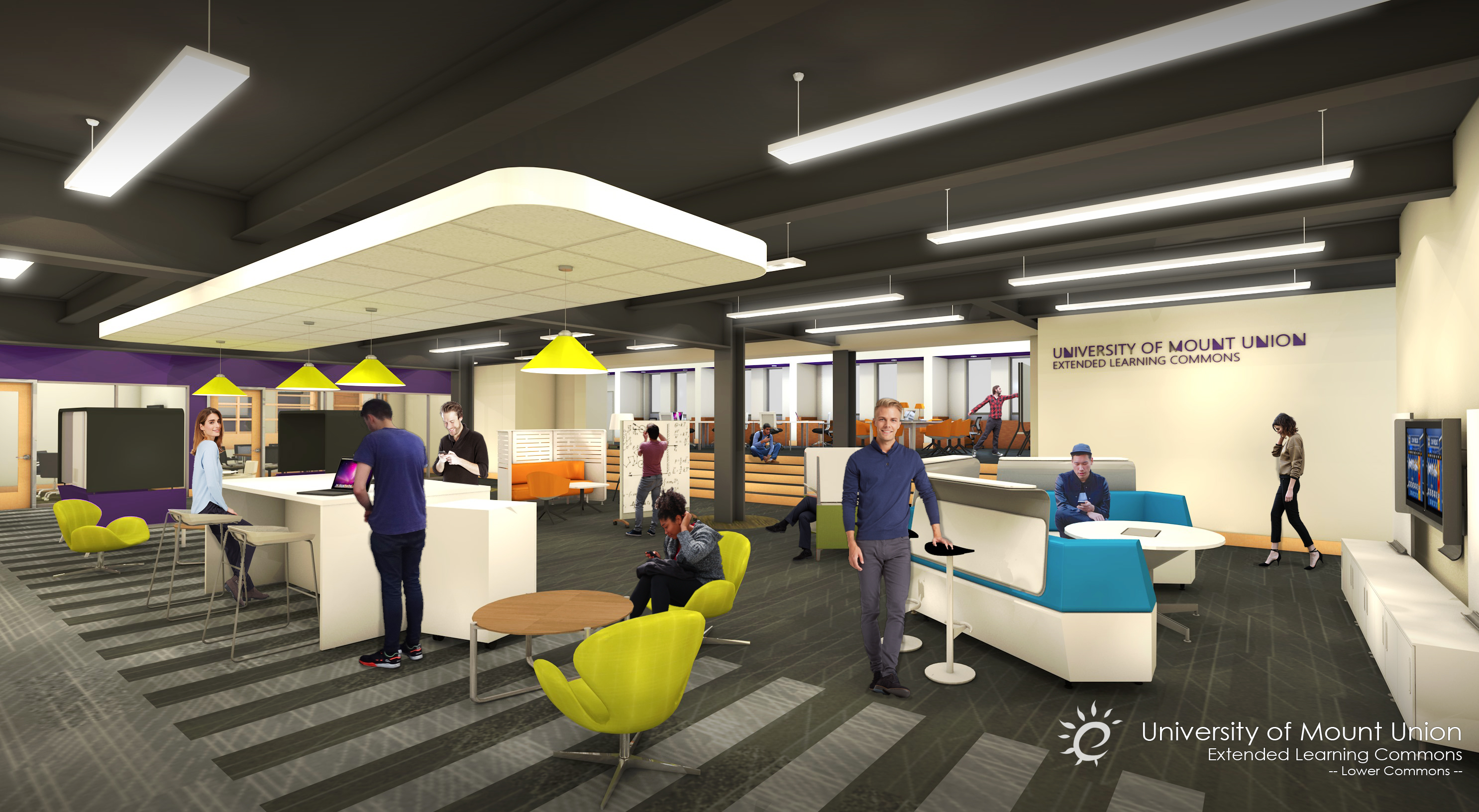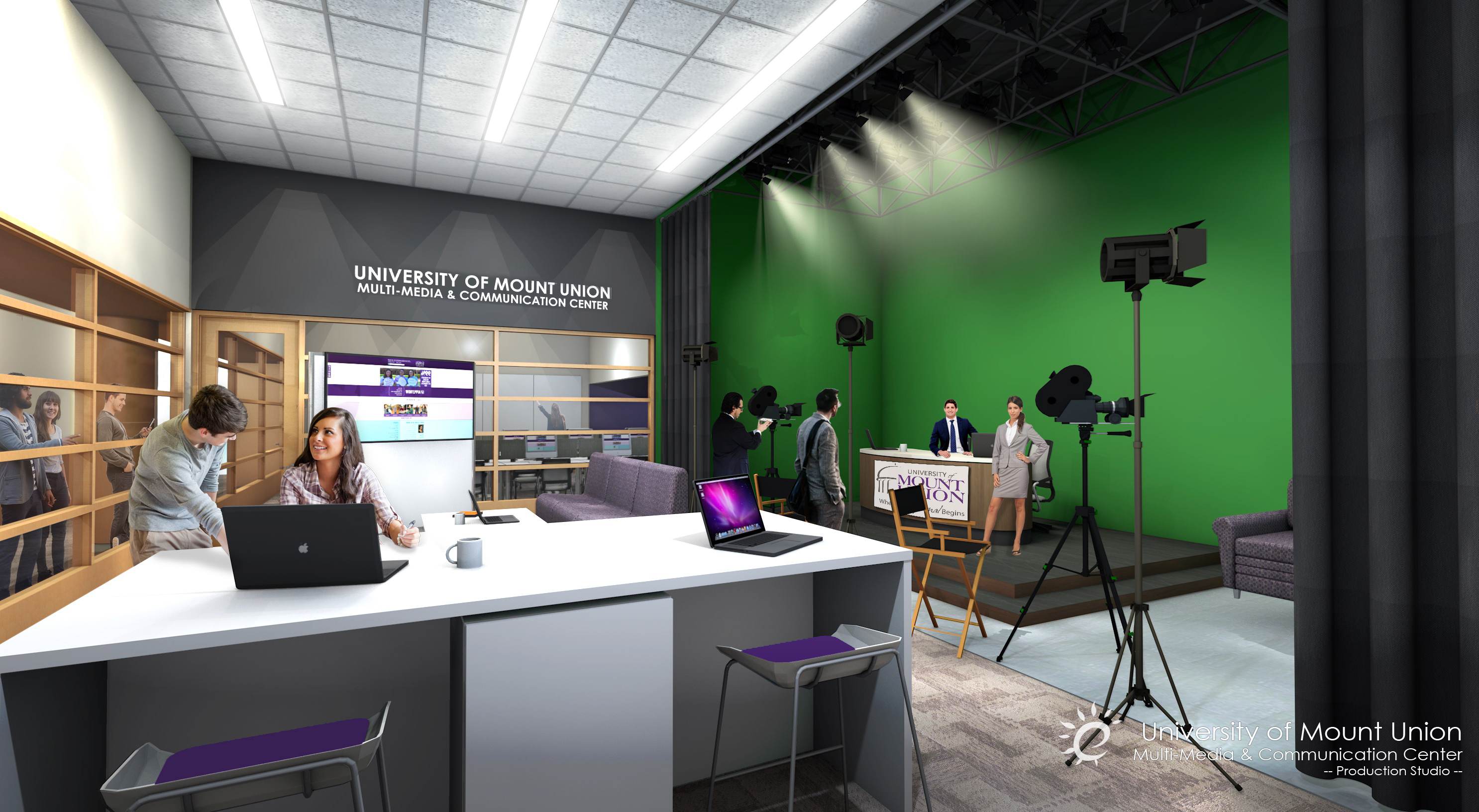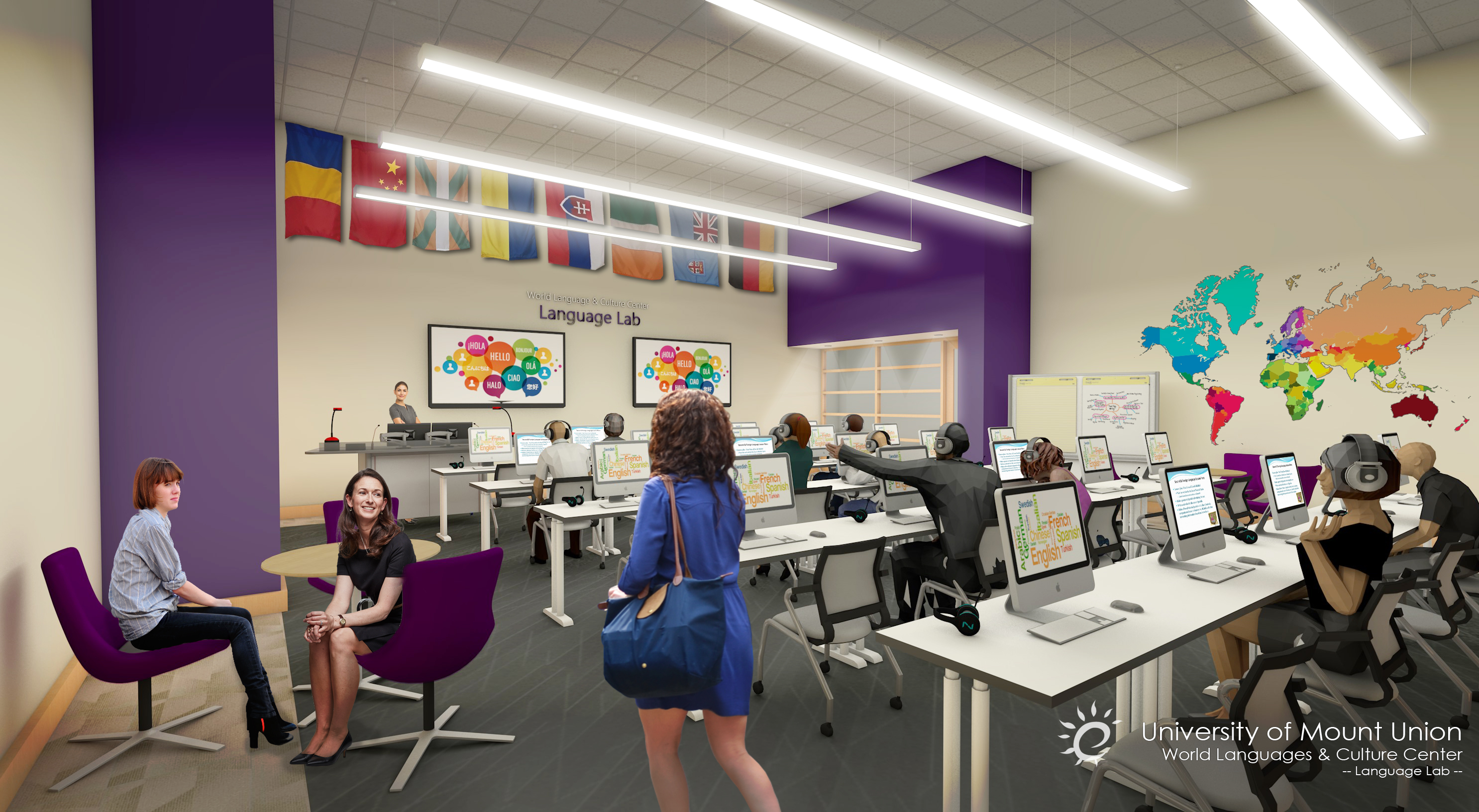Built in phases in the 1950s, 1980s, and in 2000, the Kolenbrander-Harter Information Center (KHIC) incorporates – and not to the University’s advantage – six decades of evolving and competing assumptions about the purpose of a library.
Parts of the KHIC reflect the view that a library is a warehouse for books and should provide quiet spaces for solitary study. Other parts of the KHIC reflect the fact that most library resources are available in digital form and that searching databases, accessing digitized documents, and creating visual displays of information – often as part of a group project – is what students do in libraries today.
The next iteration of the library will include the following.
- Expanded group study spaces
- Innovation space for group “making” projects
- Expanded Learning Commons to house academic success services
- Department of Communication digital classroom and studio
- WRMU studio
- Department of World Languages and Cultures
- Enhanced student study space
Communication-related fields remain popular majors at Mount Union, and a newly redesigned integrated media major better reflects the modern media landscape that students will enter upon graduation. This revised program, along with the others within the Department of Communication, provides graduates with the critical thinking and technical skills necessary for researching, writing, producing, directing, and marketing digital content.
New, innovative facilities for media production are the next step in the evolution of communication education at Mount Union. Although the KHIC currently houses the Department of Communication, our student media are located elsewhere on campus. The relocation of media arts within the renovated KHIC facility will provide a digital media studio where students and faculty can work critically and creatively with the technologies and software relevant to modern, converged media industries.
The KHIC renovation project will support communication of another kind as well – the enhanced cultural communication that comes via the Department of World Languages and Cultures. Students studying Chinese, French, German, Japanese, and Spanish will benefit from improved classroom and language lab facilities.
In today’s global society, collaboration is key – in the workforce, in our communities, and in our schools. As we prepare students for success in this modern world, we must help them hone their abilities to lead ably, communicate effectively, and think critically. Thus, it is imperative that we provide them with spaces on campus that foster student interaction and team work, while leveraging innovation and technology to do so.
In essence, we must create a library for the future, a library that incorporates today’s technology to support student research, learning, and collaboration. We must provide space that fosters interaction and teamwork while also offering quiet nooks for individual study and reflection. We must integrate student tutoring and other support services into the environment students utilize for study and research. We must also provide them access to an “innovation space” that allows them to develop hands-on skills by putting classroom theory into practice and provides them with the tools needed to carry out such practical work.
It is time for the Kolenbrander-Harter Information Center to become the innovative and accommodating space that it has the potential to be. It is time to transform the library of yesterday into a cohesive and modern learning space for tomorrow. Our students need it. They want it. And they will be better prepared for the future because of it.


